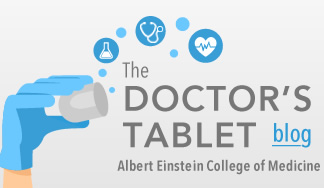Ebola Research
Drug Shows Promise Against Sudan Strain of Ebola in Mice
August 28, 2014 — (BRONX, NY) — Researchers from Albert Einstein College of Medicine of Yeshiva University and other institutions have developed a potential antibody therapy for Sudan ebolavirus (SUDV), one of the two most lethal strains of Ebola. A different strain, the Zaire ebolavirus (EBOV), is now devastating West Africa. First identified in 1976, SUDV has caused numerous Ebola outbreaks (most recently in 2012) that have killed more than 400 people in total. The findings were reported in ACS Chemical Biology.

Jonathan Lai, Ph.D.Between 30 and 90 percent of people infected with Ebola die after experiencing symptoms of the disease that include fever, muscle aches, vomiting and bleeding. In the current EBOV outbreak, at least 1,500 people have died as of the end of August. Two U.S. aid workers infected in that outbreak received an experimental treatment called ZMapp, a combination of three different monoclonal antibodies that bind to the protein of the virus. The newly described SUDV treatment also uses monoclonal antibodies, in this case synthetic antibodies designed to target a key molecule on the surface of SUDV called the envelope glycoprotein. (A glycoprotein molecule consists of carbohydrates plus a protein).
"While our antibodies show promise for treatment of SUDV infection, they wouldn't work against the EBOV outbreak now underway in West Africa," said Jonathan Lai, Ph.D., associate professor of biochemistry at Einstein and co-corresponding author of the ACS Chemical Biology paper. "That's because antibodies that kill off one strain, or species, of Ebola haven't proven effective against other strains."
In developing their SUDV therapy, the researchers started with specific antibodies made by mice. These antibodies protect the animals against SUDV infection by binding to the envelope glycoprotein on the surface of the virus. But if used in humans, mouse antibodies could provoke an immune response that would destroy them. Needing a "humanized" version of their mouse antibody, the researchers realized that its molecular structure closely resembled the structure of a commonly used human antibody.
"These two monoclonal antibodies represent potential candidates for treating SUDV infection."
– Jonathan Lai, Ph.D.
The researchers used that human antibody as a scaffold onto which they placed the Ebola-specific portion of the mouse antibody. They then made variants of the resulting molecule by subtly changing its structure in different ways using a process called "synthetic antibody engineering". Two of these variants proved able to fend off SUDV in specially bred mice. "These two monoclonal antibodies represent potential candidates for treating SUDV infection," said Dr. Lai. He noted that more research is needed before the antibody therapy can be tested on humans.
The study, titled "Synthetic Antibodies with a Human Framework that Protect Mice from Lethal Sudan Ebolavirus Challenge," was published online in ACS Chemical Biology on August 20, 2014. In addition to Dr. Lai, other co-corresponding authors were John M. Dye, Ph.D., of the United States Army Medical Research Institute of Infectious Diseases, and Sachdev S. Sidhu, Ph.D., of the University of Toronto. Other Einstein authors were Jayne Koellhoffer, B.S., Julia Frei, B.S., Nina Liu, and Kartik Chandran, Ph.D. Additional authors are Gang Chen, Ph.D., Hua Long, Wei Ye, B.Sc., Kaajal Nagar, and Guohua Pan, Ph.D., all of University of Toronto, and Samantha Zak of the U.S. Army.
The study was funded by grants from the National Institute of Allergy and Infectious Diseases, a part of the National Institutes of Health (AI090249, AI088027 and AI09762), the Canadian Institutes for Health Research (MOP-93725) and the Defense Threat Reduction Agency.
Other Top Stories
9/11 World Trade Center Exposure Linked to Heart Disease Among NYC Firefighters
On Becoming a Physician: New Einstein Students Receive White Coats and Stethoscopes
Novel Therapy for Acute Migraine Shows Promise in Phase 3 Clinical Trial
First Complete Wiring Diagram of an Animal's Nervous System
Multimillion Dollar NIH Grant to Help Reduce Opioid Use & Get Care to People Who Need It
NIH Grant Funds $23 Million Study of Diseases Affecting People Living with HIV
New TAILORx Data Guides Adjuvant Therapy in Younger Breast Cancer Patients
Einstein Celebrates Its 61st Commencement
Bolstering Biopsies: Testing Patients' Individual Cells to Guide Treatment



Tablet Blog